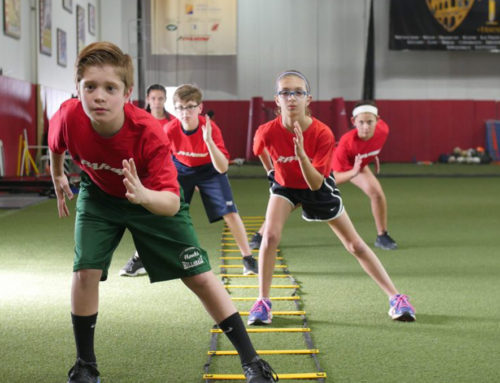By: Jewel Kessler, NASM CPT/FNS, HAC Trainer and Small Group Director
If you want long-term success, it’s important to be clear about what you want to accomplish. There is no magic formula that will help you – the consistent hard work is what will get you there. Everyone wants to achieve something different whether it be a better physique, improved health, decreased stress – the good news is, these are ALL the benefits you will experience with a regular exercise regimen. The best way to achieve your fitness goals is to start with a plan.
What makes the HAC unique is that we CARE about you hitting your fitness and wellness goals and have helped many along their journey. See some of our member success stories here.
HAC Trainer, Jewel Kessler shares some simple rules when designing your fitness program. Questions or need help getting started? E-mail her at Jewel@horshamathletic.com.
- Define a Goal
Your goal should be specific, attainable and detailed. According to a 2005 American College of Sports Medicine (ACSM) study, people who set small, specific goals are 30 percent more likely to reach them then if they set just a general goal such as, “I want to lose weight.” Pick one goal to focus on, write it down, keep it some place visible (i.e. mirror, fridge, wallet) and find people close to you to hold you accountable that know your goal. Keep your “accountability friends” as people that want to see you succeed and will not sabotage your success. When you attain your goal reward yourself with a trip on a hot air balloon ride, new sneakers, new workout gear, or an activity which would motivate you to stay on track such as white water rafting or skydiving.
- Pick Six
When you are strength training aim for six moves that target all major muscle groups (abs, arms, back, chest, glutes and legs). This chart is a general rule of thumb when creating a well-rounded strength routine.
| If your goal is… | Muscle group… | Number of exercises… |
| Upper Body | Chest | 1 (i.e. bench press) |
| Back | 1 (i.e. pull up) | |
| Arms | 2 (i.e. bicep curls and tricep extensions) | |
| Core | 1 (i.e. plank) | |
| Lower body | 1 (i.e. squat) | |
| Abs | Core | 3 (i.e. plank, bird dog, mountain climbers) |
| Chest | 1 (i.e. push-ups) | |
| Back | 1 (i.e. superman) | |
| Lower body | 1 (i.e. lunges) | |
| Lower Body | Glutes | 2 (i.e. bridges and step ups) |
| Quads | 1 (i.e. sumo squats) | |
| Hamstrings | 1 (i.e. leg curls) | |
| Upper body | 1 (i.e. curl to overhead press) | |
| Core | 1 (i.e. burpee) |
- Tailor Your Workout Towards Your Goal
Start with larger muscle groups such as your legs, glutes, back and chest to warm up the body and build mental focus. Using larger muscle groups first will create heat faster than starting with smaller muscle groups as well as get the more challenging moves out of the way first. If you exhaust yourself on isolating the smaller muscle groups first you won’t have the energy to tackle the larger ones. Add core work in between your upper body and lower body moves. This types of method keeps your core muscles constantly engaged during the workout to help support your spine and movement.
- Use the Right Amount of Reps for Your Goal
Repetitions or “Reps” is the number of times you repeat an exercise which in turn strengthens your muscle fibers. Sets is the number of times you repeat the rep count for a desired outcome.
- If you want endurance, then 12 to 25 repetitions with lighter to medium weight, one to three sets, is appropriate for each exercise.
- If you want to maximize your strength, then four to six repetitions with heavy weight, four to six sets, is appropriate for each exercise.
- If you want to maximize your power, then six to 12 explosive repetitions, one to three sets, is appropriate for each exercise.
Take a 30 second to 2 minute rest in between sets to make sure you’re ready to go for the next set. If working on endurance, limit your rest periods to 30 to 60 seconds. If working on maximal strength or power you will need longer rest periods such as one to two minutes to recover so you are refreshed to perform the next set safely.
When choosing the correct resistance or load, make sure you are using weight or workout tools that make the last two to three reps challenging without breaking good form.
- Tweak as You Go
Every four to six weeks switch up your exercises, reps, sets, resistance, and/or rest periods to reduce the dreaded plateau. Try more challenging routines that incorporate multiple muscles working at the same time, add balance or agility exercises, try more bodyweight moves, or even consider doing something completely different like a workout video, workout class, small group training or personal training. Keep your workouts interesting and fun. You will look forward to “your time” and value all you have accomplished overtime. Enjoy!
Need a jump start? Schedule a workout with one of our Personal Trainers!





